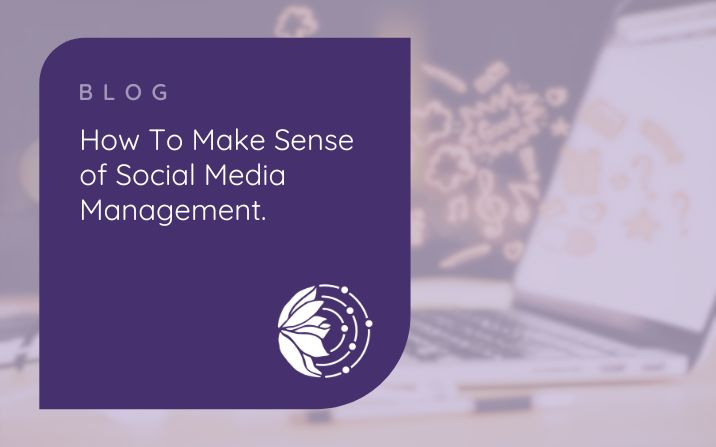
Social Media can seem like a nightmare to get right. Everyone is telling you “it’s where you need to be” to gain new clients, but if you’re not careful it can easily take up all of your time. Just learning how to use the different social media channels, writing content, responding to people, etc – there’s so much to do, and it can seem hard to know where to start.
So how do you manage being social whilst running your business?
The easiest way is to outsource. Ok, outsourcing is discussed a lot in this blog, but it’s for a very good reason. The cost of outsourcing is easily outweighed when you consider how much time taken out of your business to manage your social media would cost in comparison. Would you rather spend your time ‘on’ the business, or ‘in’ business?
But let’s forget about outsourcing for a moment and look at how to manage social media effectively.
Creating and scheduling content
 Content is the crucial part of social media marketing. You need to be keeping in touch with your client base, attracting new customers, and using social media to raise your reputation and SEO authority. So, like any other form of marketing you need to understand your target audience, but you also need to know how they use social media. Facebook, for example, is more about entertainment and catching up with friends than LinkedIn, which is about making business connections.
Content is the crucial part of social media marketing. You need to be keeping in touch with your client base, attracting new customers, and using social media to raise your reputation and SEO authority. So, like any other form of marketing you need to understand your target audience, but you also need to know how they use social media. Facebook, for example, is more about entertainment and catching up with friends than LinkedIn, which is about making business connections.
Armed with that information you can write relevant posts – around three a day for Twitter and one a day for Facebook is the recommended amount but frequency will vary according to your business and audience. There’s also content curation – where you find content that your followers will find useful and informative – the latest beauty techniques if you’re a beautician, for example.
The aim when writing and sharing posts is to help, inform and educate your audience about what you do.
Using images is also important with social media – a post will perform much better with an image attached than just text alone. Rather than spending hours scouring the internet for something appropriate, sites like Canva (link) offer templates specifically designed for social media that can be adapted to suit your needs in minutes.
The management part of content really comes into play with the scheduling and analysis of your posts.
It’s not enough to create and find content for your social media accounts, then upload and leaving them to do their work. There are three steps to managing your content:
1. Post at the right time
There will be certain times of the day (or night) where posts will perform better for you than others. If your target audience commute then rush hour will work well, early evening might work better for people who work from home than office based professionals who tend to check during their coffee or lunch breaks. Unfortunately, knowing when is down to trial and error and you’re not going to be around 24/7 to try different times, so use a website such as Buffer or Hootsuite that will do this for you.
Consider when your potential customers are most likely to be using social media and schedule your posts for those times.
Buffer is great because it will analyse your social media accounts and, based on response, will recommend the best times for you to post. You just upload your content, make sure you’re happy with the scheduling settings and it’ll do the work for you.
2. Analyse your posts
It’s important to evaluate your posts to see how well they performed. Did they get any likes or shares? Can you spot a trend with the content that is performing better than others? Buffer will analyse content for you and send you an email if a post is performing particularly well, along with a weekly overall review of your content.
You’ll also be able to spot the times when your posts are performing better than others. It can be useful to create a simple spreadsheet where you can record what the post was about, how many likes and shares it received, how many times the call to action was clicked on and use that to plan posts in the future.
Evaluation only works if you act on what you learn and make changes – so if a post performed badly, try using again with a different image at a different time of day.
3. Interaction
This is the why you use social media – to get to know your customers and so they can get to know you. So it’s really important that you interact with your followers if they comment on your post, and ideally, this should be done as soon as you can. Not always easy but adding social media apps to your phone or tablet can help you keep on top of things when you’re out and about.
Of course interaction works both ways, especially if your business is B2B. Whilst you can’t go into personal profiles and interact with individual’s; if it’s a business owner who has responded to your content, return the favour and interact with their business page or profile too.

Responding to messages
Social media is fast paced and so people tend to expect a fast response when they message you, or comment with a question. In fact, Facebook actually uses how quickly you respond to rank you on customer service. This affects how well your entire page performs – somewhat scarily, it prefers a reply within 5 minutes!
It’s impossible to be chained to your internet 24 hours a day just in case a customer wants to make contact with you, but be aware that the faster your response the better the chance of converting that visitor into a paying and recurring customer.
Let’s talk about brand consistency
One of the most commonly overlooked components of social media but perhaps the most essential, is brand consistency. Managing every social media channel so it sounds authentic to you is key to reaping the rewards of social media marketing.
People are extremely intuitive when it comes to detecting changes – if a post stands out as being different because it’s got spelling errors that don’t normally crop up, or there’s text speak when you usually use textbook English; this sets off alarm bells as ‘not being quite right’. That’s the last thing you want when trying to appeal to new customers.
Ensuring you use the same branding across all social media channels is important – the same language, colour scheme, logos, images, etc. Not only in the profile set up, but across the content as well. If you sell nail polish and usually share posts about the beauty industry, suddenly posting about plumbing situations isn’t going to work out too well!
There is a lot to think about when it comes to social media management, and it can be a tough nut to crack but it’s so worthwhile. Hopefully this blog has given you some food for thought and you know how to get in touch if we can help support you with your social media.

